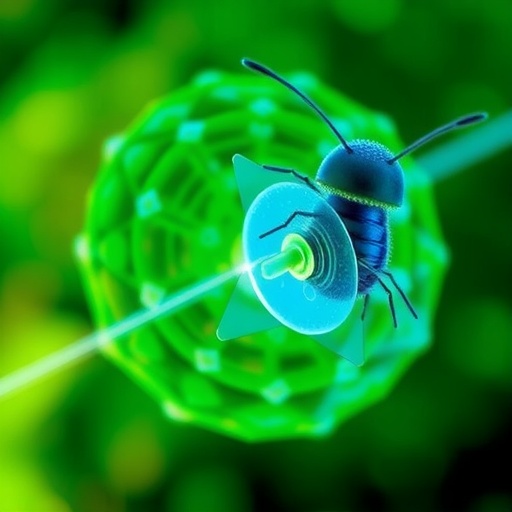Recent advancements in the field of bioimaging have heralded the rise of intelligent micro/nanomotors (MNMs), which hold the promise of revolutionizing traditional imaging methodologies. These innovative tools provide an unprecedented ability to enhance detection sensitivity and enable real-time tracking of critical subcellular activities and changes in their surrounding microenvironments. This transformative capability could open new avenues in biological research, disease diagnosis, and therapeutic monitoring. However, achieving deep-tissue imaging with high resolution remains a major challenge due to inherent limitations, including suboptimal penetration depth and signal degradation in complex biological tissues.
The study fundamentally explores the potential of various signal-enhancing mechanisms employed by MNMs within the realm of single-modal imaging. It emphasizes the importance of these methodologies in establishing a groundwork for multimodal imaging applications. By integrating multimodal approaches through carefully designed MNM-probes, researchers are on the brink of innovating imaging techniques that can generate results that are more sophisticated than those obtained through traditional imaging methods. This exploration not only underscores the complementary nature of different imaging modalities but also sets the stage for the creation of more precise and effective diagnostic tools.
Moreover, there’s a significant discussion surrounding the role of artificial intelligence in the development of intelligent MNM systems. Utilizing machine learning algorithms, these systems are crafted to enhance image quality and precision while simultaneously overcoming the challenges associated with spatiotemporal resolution. This integration of AI technologies aims at providing a more solid theoretical framework and a comprehensive research roadmap, facilitating the transition from conventional bioimaging technologies to state-of-the-art solutions that leverage the unique attributes of MNMs.
Key to the functionality of MNMs is their design versatility, which allows for the incorporation of diverse materials and fabrication techniques. From organic dyes to quantum dots, the choice of materials plays an essential role in determining the efficiency and effectiveness of MNMs for various imaging applications. These MNMs can be driven by multiple energy sources, including magnetic fields, light, or chemical reactions. Such flexibility leads to significant improvements in both design processes and practical applications, enabling the introduction of active targeting mechanisms that can operate effectively within the often-disrupted environments of biological settings.
While MNMs demonstrate a high degree of sophistication, they also serve as multifunctional platforms, capable of integrating multiple imaging modalities. This integration is key in bridging the gap between diagnostic imaging and targeted therapeutic approaches. With their ability to act as dynamic contrast agents, MNMs exhibit autonomous propulsion and multifunctional properties, thereby significantly enhancing the utility of ultrasound, fluorescence, photoacoustic, and magnetic resonance imaging techniques. The implications of such innovations are profound, allowing clinicians and researchers to pinpoint disease locations with greater accuracy and understand disease progressions on a more granular level.
One of the standout features of intelligent MNMs lies in their autonomous motion and the precision of their control mechanisms. This capability greatly enhances their penetration depth, allowing them to navigate complex biological tissues while maintaining image stability. The study demonstrated that these systems achieved unprecedented levels of sensitivity, making it possible to detect target objects of various shapes and sizes at subcellular resolutions. Despite these advancements, there remain complex challenges, particularly when it comes to deep tissue penetration where motion-related difficulties often lead to significant signal loss, especially in high-viscosity environments.
The issue of background noise interference further complicates the imaging landscape, as it can distort the quality of obtained images or lead to off-target deposition of MNMs. Given the inherent complexity of MNMs—where various variables interact in multifaceted ways—there’s a strong emphasis on the need for further exploration into motion behaviors and control mechanisms. Future research will focus on refining biocompatibility and degradability, ultimately aiming to create MNMs that are not only effective in imaging but also safe for use in biological systems.
The innovative imaging strategies developed through MNM research represent a significant reduction in both effort and time in comparison to traditional methods. By leveraging advanced strategies like spectral engineering and swarm intelligence, scientists have been able to devise imaging systems that can adapt to changing conditions while ensuring stable signals, regardless of the biological barriers they encounter. This efficiency in development paves the way for innovation in biomedical diagnostics, ultimately leading to faster and more reliable medical solutions.
Overall, MNMs-enhanced imaging technologies are rapidly becoming accessible and cost-effective options for researchers and clinicians alike. By moving away from tedious trial-and-error methods, these advanced imaging systems are inspiring a new wave of innovation that could fundamentally alter our approach to biomedical diagnostics and therapeutic applications. As researchers continue to explore and expand the capabilities of MNMs, the horizon looks exceptionally promising, paving the way for breakthroughs that could redefine the landscape of biomedical imaging.
The findings of this groundbreaking study indicate that the integration of intelligent MNMs into bioimaging practices could lead to significant advancements in the field. These developments may not only enhance the precision and accuracy of imaging systems but also provide critical insights into therapeutic efficacy, cellular interactions, and disease mechanisms. With ongoing research and commitment to solving current limitations, the future of bioimaging appears to be filled with immense potential, promising to unlock new avenues for understanding and treating complex biological phenomena.
By emphasizing the convergence of technology, creativity, and scientific investigation, the exploration of intelligent MNMs stands as a testament to the boundless possibilities within the interdisciplinary realm of bioengineering. As researchers continue to refine and develop these systems, the dream of achieving unparalleled imaging capabilities seems ever closer to reality, holding the key to many of the future’s medical and research breakthroughs.
Subject of Research: Intelligent micro/nanomotors in bioimaging
Article Title: Advanced Imaging Strategies Based on Intelligent Micro/Nanomotors
News Publication Date: September 10, 2025
Web References: DOI: 10.34133/cbsystems.0384
References: Not mentioned in the text provided
Image Credits: Lei Wang, School of Chemistry and Chemical Engineering, Harbin Institute of Technology
Keywords: micro/nanomotors, bioimaging, intelligent imaging strategies, advanced diagnostics, multimodal imaging, artificial intelligence, quantum dots, fluorescence, photoacoustic imaging, deep tissue penetration, biocompatibility.




